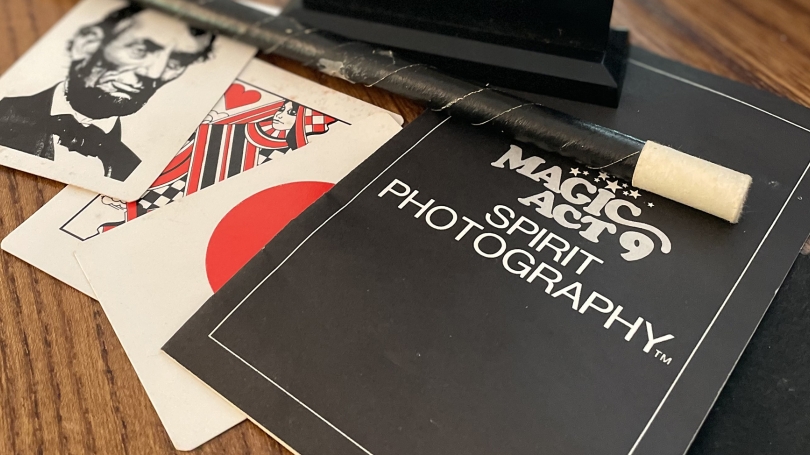
- Undergraduate
- Off-Campus Programs
- Student Work
- Diversity
- News & Events
- People
Back to Top Nav
Back to Top Nav
Back to Top Nav
Back to Top Nav
Back to Top Nav
Summer/23
Three years ago, I was all fired up to teach a new freshman writing seminar called Special Effects in Cinema History. Then came the inevitable questions: How to structure it? Where to start? How to begin the course without falling back on a chronological list of special effects through the decades? Simply promising how-they-did-it explanations for each new technological advance wouldn't speak to the idea of special effects—how they create a coherent, concrete visual world and yet never convince us that it's real. Special effects, and those who study them, have wrestled with this question at least since 1896, when French illusionist Georges Méliès morphed from stage magician to cinematic conjuror.
After a few weeks of second-guessing and a lot of coffee, I began the class with something simple: a magic trick. I used a gimmicked (altered) deck of playing cards to create the illusion that, no matter which card students chose or where they cut it into the deck, it instantly reappeared on top. After a few variations on this effect, I flipped through the whole deck to show it suddenly contained nothing but multiples of a single card, the eight of hearts. Then I squared up the deck and riffled it one more time … and every card was different once again.
Read the full essay Tricks of the Trade on The University of Chicago Magazine's website.
Tricks of the trade was published by The University of Chicago Magazine. The University of Chicago is Prof. Young's Alma Mater.